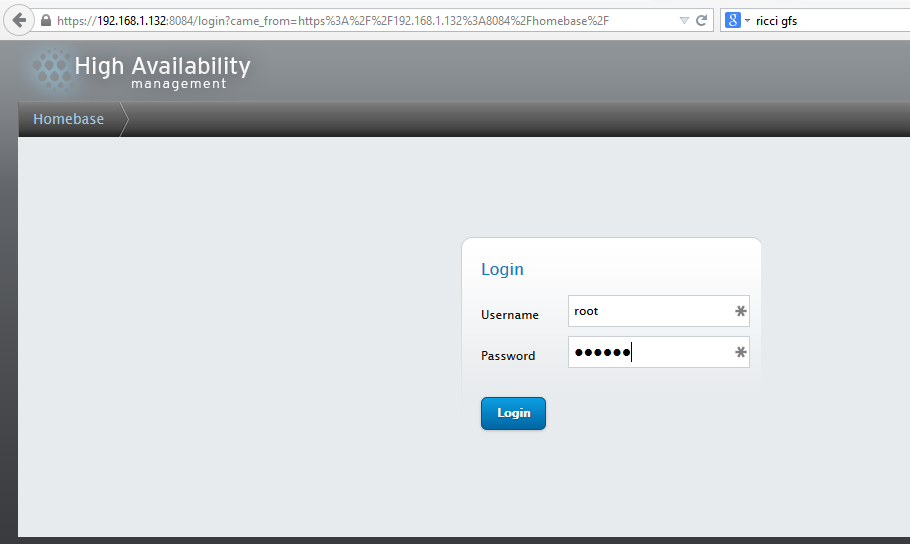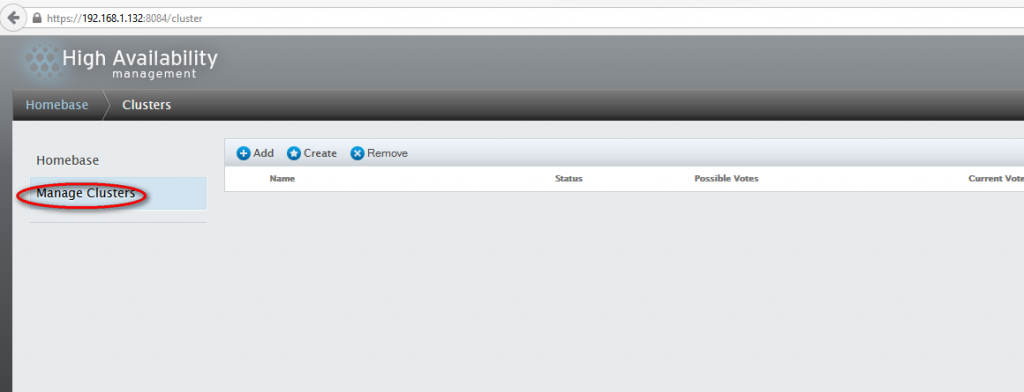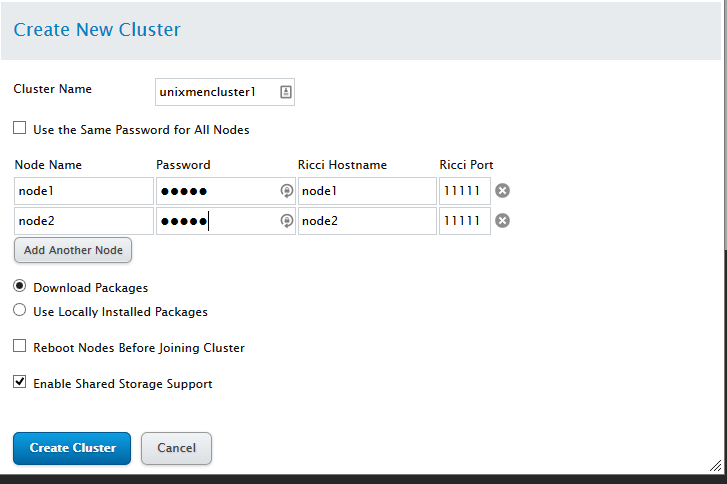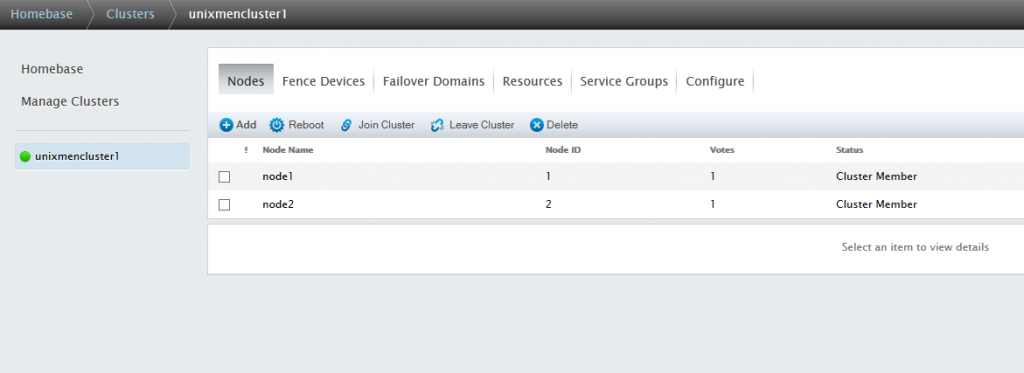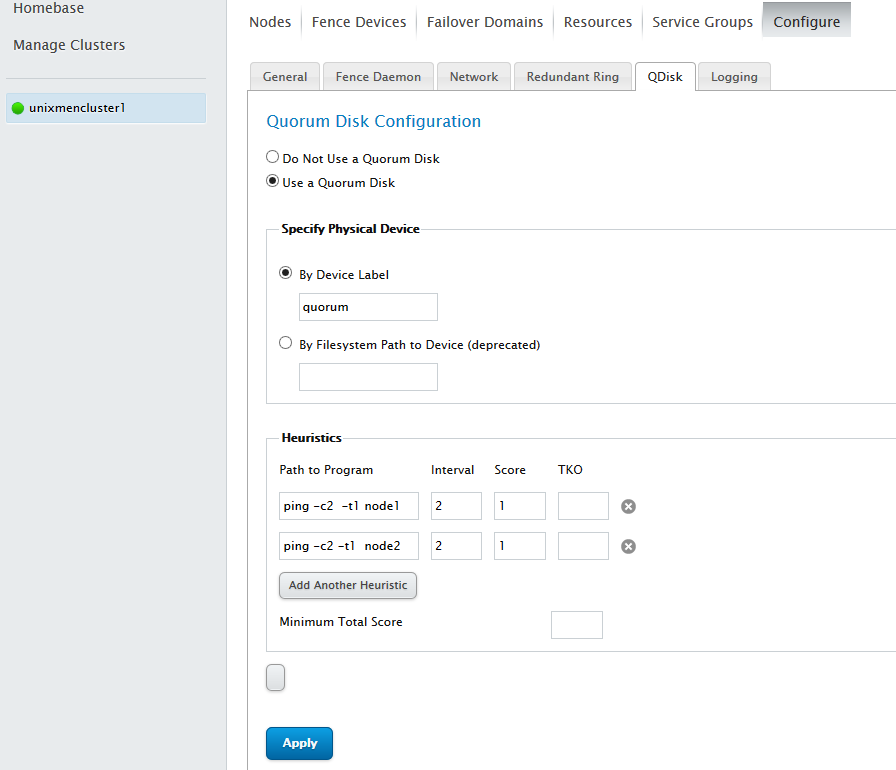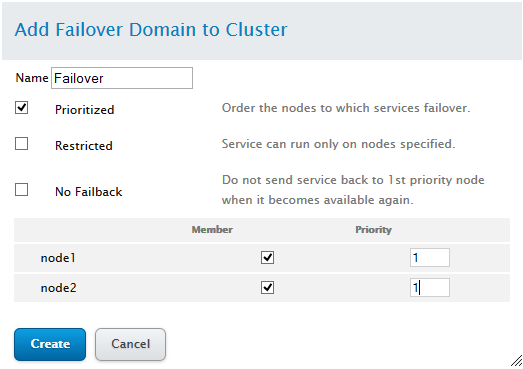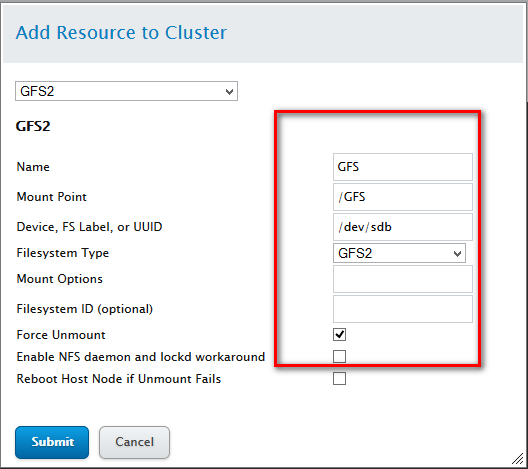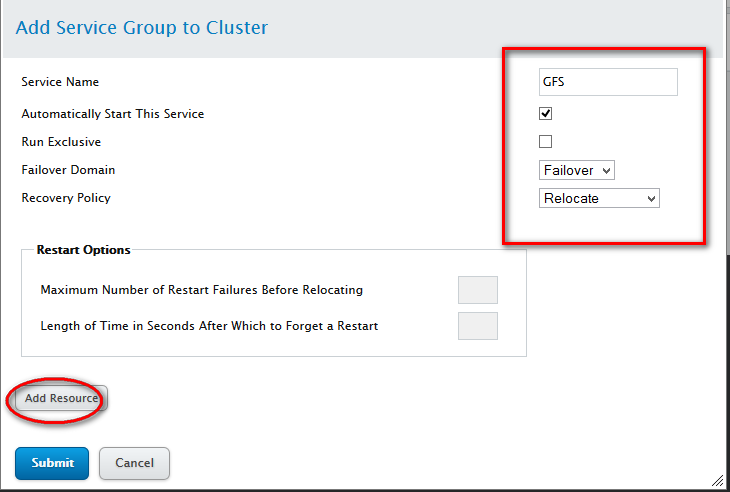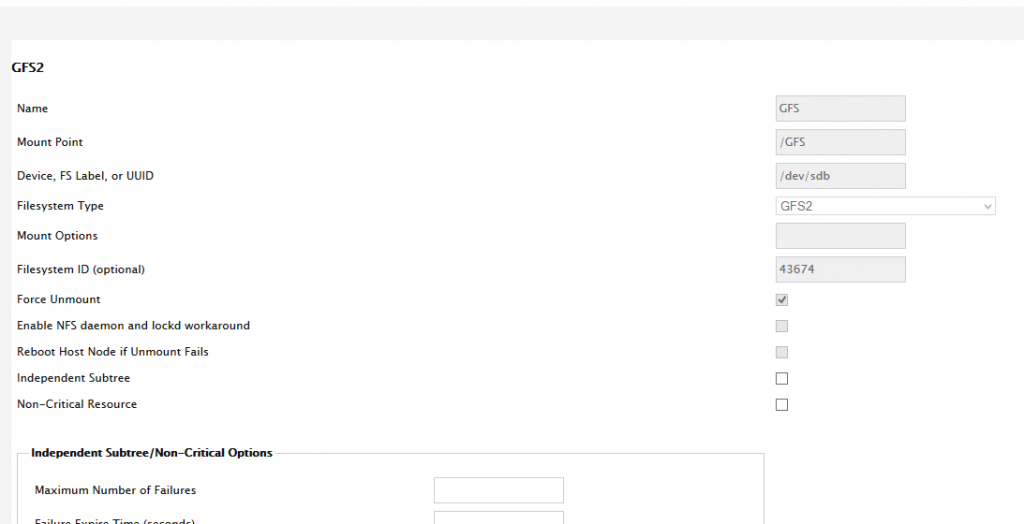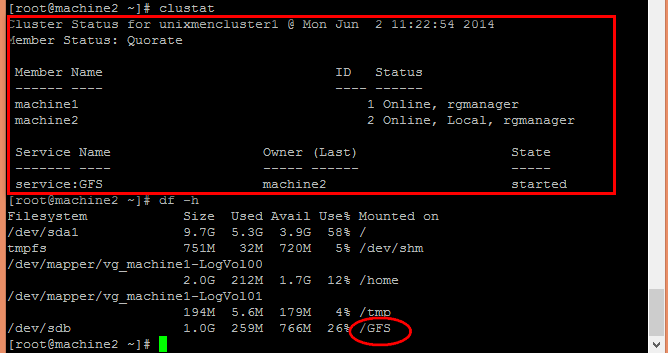In computing, the Global File System 2 or GFS2 is a shared disk file system for Linux computer clusters. GFS2 differs from distributed file systems (such as AFS, Coda, InterMezzo, or GlusterFS) because GFS2 allows all nodes to have direct concurrent access to the same shared block storage. In addition, GFS or GFS2 can also be used as a local filesystem. GFS has no disconnected operating-mode, and no client or server roles. All nodes in a GFS cluster function as peers. Using GFS in a cluster requires hardware to allow access to the shared storage, and a lock manager to control access to the storage. The lock manager operates as a separate module: thus GFS and GFS2 can use the Distributed Lock Manager (DLM) for cluster configurations and the “nolock” lock manager for local filesystems. Older versions of GFS also support GULM, a server based lock manager which implements redundancy via failover.
Here is my testing environment:
Virtualbox:
- Two CentOS 6.5 (64 bit) (node1 – node2).
- Conga administration and management CentOS 6.5 (64 bit) (node3).
- Shared disk between node1 and node2 /dev/sdb/.
Make the /etc/hosts on 2 nodes like this:
vi /etc/hosts
192.168.1.130 node1 192.168.1.131 node2 192.168.1.132 node3 ( management Console)
Install this on node1 and node2
[root@node1 ~]# yum groupinstall "iSCSI Storage Client" "High Availability" "Resilient Storage"
[root@node2 ~]# yum groupinstall "iSCSI Storage Client" "High Availability" "Resilient Storage"
Install in Node3 (management node):
[root@node3 ~]# yum groupinstall "High Availability Management" "High Availability"
Format a GFS2 partition
Explanation:
Formatting filesystem: GFS2
Locking Protocol: lock_dlm
Cluster Name: unixmencluster1
FileSystem name: GFS
Journal: 2
Partition: /dev/sdb
The Node1 and 2 is sharing one disk /dev/sdb.
[root@node1 ~]# mkfs.gfs2 -p lock_dlm -t unixmencluster1:GFS -j 2 /dev/sdb This will destroy any data on /dev/sdb. It appears to contain: data
Are you sure you want to proceed? [y/n] y Device: /dev/sdb Blocksize: 4096 Device Size 1.00 GB (262144 blocks) Filesystem Size: 1.00 GB (262142 blocks) Journals: 2 Resource Groups: 4 Locking Protocol: "lock_dlm" Lock Table: "unixmencluster1:GFS" UUID: ef9eda0d-a3da-b62d-f694-d738f5787285
And,
[root@node2 ~]# mkfs.gfs2 -p lock_dlm -t unixmencluster1:GFS -j 2 /dev/sdb This will destroy any data on /dev/sdb. It appears to contain: Linux GFS2 Filesystem (blocksize 4096, lockproto lock_dlm)
Are you sure you want to proceed? [y/n] y
Device: /dev/sdb Blocksize: 4096 Device Size 1.00 GB (262144 blocks) Filesystem Size: 1.00 GB (262142 blocks) Journals: 2 Resource Groups: 4 Locking Protocol: "lock_dlm" Lock Table: "unixmencluster1:GFS" UUID: af45a3c0-da10-97b1-7ade-cb935778da78
1- make password for ricci user on both machines node1 and node2
ricci is an agent that runs on any machine or cluster node to be administered. It is written in C for speed,
[root@node1 ~]# passwd ricci Changing password for user ricci. New password: BAD PASSWORD: it is too short BAD PASSWORD: is too simple Retype new password: passwd: all authentication tokens updated successfully. [root@node1 ~]#
And
[root@node2 ~]# passwd ricci Changing password for user ricci. New password: BAD PASSWORD: it is too short BAD PASSWORD: is too simple Retype new password: passwd: all authentication tokens updated successfully. [root@node2 ~]#
2- start the ricci services
chkconfig ricci on [root@node1 ~]# /etc/init.d/ricci start Starting system message bus: [ OK ] Starting oddjobd: [ OK ] generating SSL certificates... done Generating NSS database... done Starting ricci: [ OK ] [root@node1 ~]#
And
chkconfig ricci on
[root@node2 ~]# /etc/init.d/ricci start Starting system message bus: [ OK ] Starting oddjobd: [ OK ] generating SSL certificates... done Generating NSS database... done Starting ricci: [ OK ] [root@node2 ~]#
3- Start Conga Services on (node3)
[root@node3 ~]# /etc/init.d/luci start Start luci... [ OK ] Point your web browser to https://node3:8084 (or equivalent) to access luci [root@node3 ~]#
3-1 Stop The network manager and start the Cluster manager
service NetworkManager stop /etc/init.d/cman restart
4- Login to Luci Console
Login with root user and root password:
https://node3:8084
then under mamager Clusters > Create
Insert the Clustername you created before in the formatting, node name or host name, password for and Ricci user:
Click Create Cluster.
after this the nodes should be live. if not please stop the network manager and restart v the cman service.
5- Configure the Quorum
Under Configure > Qdisk
6- Configure Domain:
Failover Domain > add
7- Create Resources
Create under node1 and node GFS partition:
[root@node1 ~]# mkdir /GFS
[root@node2 ~]# mkdir /GFS
go to Ressources > add > GFS2
8- Create Sevice group
Service Group > Add
Add GFS2 resources:
Wait few minutes, then you will see something like this:
Check the status of the Cluster and the mount.
This is an small example in Vitualbox with 1 shared disk.
Cheers!



